Surgical site infections (SSIs) are complications of surgery that cause significant post-operative morbidity (Gibbons et al, 2011). SSIs are reported to occur in 0.8% to 18.1% of small animal surgical procedures with significant variation associated with surgery type (Nelson, 2011). It is widely recognised that aetiology of SSIs is complex and multifactorial and that patient, surgeon and environmental factors all contribute to the risk of developing an SSI (Humes and Lobo, 2009). It is therefore logical that all theatre protocols should be designed in order to minimise the risk of SSIs and reduce their occurrence. There are many current practices in both human and veterinary operating theatres that are supposedly aimed at controlling infection and reducing SSI rates. This article aims to critically assess whether there is a clear evidence base for these practices or whether they are simply rituals or myths that have become habitual in everyday working practices. The practice of cleaning theatres, disinfectants and damp dusting is beyond the scope of this article which will instead focus on recent evidence pertaining to theatre wear and asepsis with regard to the surgeon, surgical site and patient.
A history of infection control
Historically surgical outcomes were poor until the early nineteenth century with the major contributing factor being SSIs (Humes and Lobo, 2009). Some of the major advancements in infection control began during this time and the legacy of this period remains to this day. In the mid nineteenth century Oliver Wendell Holmes and Ignaz Semmelweis demonstrated that puerperal fever could be transmitted between patients with devastating results (Humes and Lobo, 2009; Eisen, 2010). Semmelweis further noted that there was a higher incidence where women were treated by physicians who had come directly from the mortuary and postulated that direct transmission was the cause of the infection (Humes and Lobo, 2009). A strict hand washing regimen was implemented and mortality was decreased from 11.4% to 1.3% within 2 years (Humes and Lobo, 2009).
Joseph Lister (1827–1912) introduced the concept of skin disinfection of the surgical site and hand antisepsis for the surgeon as a means of reducing SSIs (Widmer et al, 2010). Halstead first introduced the use of surgical gloves in 1889 because his assistant had a persistent dermatitis caused by the mercuric chlorhexidine solution used to sterilise the instruments (Eisen, 2011). However it took until the early 1900s for surgeons to widely adopt the use of gloves to protect the patient. A seminal study demonstrated a drop in SSI rate following hernia repair from 29% to 0.55% when surgical gloves were worn by the entire surgery team (Eisen, 2011).
Dress of theatre staff
For many years it has been traditional in both human and veterinary theatres for personnel to put on freshly laundered but non-sterile theatre wear prior to entering the theatre area, to change their shoes or wear overshoes and to cover their hair with a surgical cap (Figure 1). There is no evidence that the wearing of ‘scrub suits’ in theatre influences the incidence of SSIs and while hair and scalp microorganisms have been implicated in SSI, they do so regardless of the wearing of surgical caps (Manley and McNamara, 2010). The National Institute for Clinical Excellence (NICE) Guidelines CG74 also recognise this lack of significant evidence but conclude that the wearing of specific, freshly laundered, theatre wear and other non-sterile theatre wear contributes to theatre discipline and for this reason may contribute to minimising the risk of SSI. There is little evidence to support the benefits of wearing dedicated theatre shoes with some studies showing no difference in theatre floor contamination with their use when compared with outdoor shoes and some studies showing a benefit (Amirfeyz et al, 2007). It has been demonstrated however that theatre shoes are less contaminated than outdoor shoes and that ritualistic behaviour and regular cleaning of theatre shoes may decrease bacterial load on footwear (Amnirfeyz et al, 2007). Current thought would suggest that infection risk from floor bacteria is small and it is indicated that there is little benefit from rigorous enforcement of transfer areas and changing trolleys when taking patients to theatre and this may possibly extrapolate to footwear (Aminirfeyz et al, 2007).
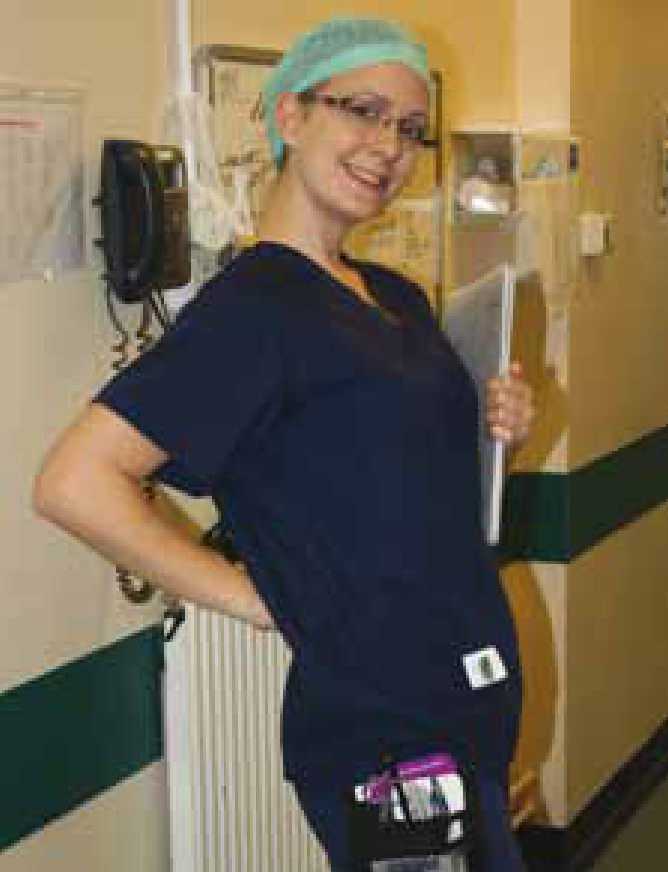
The wearing of surgical face masks in operating theatres is controversial with some studies concluding that wearing masks have little effect on SSIs, while others have suggested that wearing masks may increase the likelihood of SSI as the friction caused by the mask causes increased shedding of microorganisms (Manley and McNamara, 2010). A recent Cochrane review (Lipp and Edwards, 2012) concluded that the evidence to assess the effect of surgical masks on SSI rates was insufficient and that more research is needed. In response to this, in human operating theatres, the NICE Guidelines CG74 state again that non-sterile theatre wear may contribute to theatre discipline and thus reduce risk of SSI but also state that this is open to interpretation.
It is worth mentioning at this point the recommendations of the British Orthopaedic Association (BOA) which specifically state that masks are worn and hair is kept covered by all personnel in the operating theatre and during arthroplasty (Manley and McNamara, 2010). In fact, some human orthopaedic surgeons will elect to use body exhaust suits to reduce the risk of SSI from the hair and face (Manley and McNamara, 2010).
Jewellery (e.g. rings) and nail polish are often removed by the surgical team prior to hand preparation and gloving and are part of many theatre protocols. A recent Cochrane review by Arrowsmith and Taylor, 2012, concluded that there is a lack of evidence for this practice on SSI rates. Despite this the National Institute for Health and Care Excellence (NICE) Guidelines on SSIs CG74 recommends that the operating team remove hand jewellery, artificial nails and nail polish before operations.
Surgeon hand preparation for surgery
The aim of surgical hand preparation is to reduce the burden of skin bacteria on the hands of the surgical team for the duration of the procedure in case of an unnoticed glove puncture (Figure 2). It should be noted however that there has never been a clinical study performed to evaluate this practice (Widmer et al, 2010). There has been evidence for some time now to exclude the use of brushes from the procedure of septic hand preparation for surgery as it may damage the skin barrier and encourage shedding of cells (Widmer et al, 2010). The current NICE Guidelines CG74 allow for either a medicated hand wash or an alcohol-based hand gel to be used prior to surgery following any gross decontamination being removed with a hand wash at the beginning of the day and then again whenever hands become visibly soiled. Both methods are suitable for the reduction of SSI but the alcohol hand preparations have several advantages including their rapid antimicrobial action which is superior to that of any medicated soap, wider spectrum of activity, lower side effects and the absence of recontamination of the hands from a water source when rinsing (Widmer et al, 2010). Maintaining the skin barrier and ‘healthy skin flora’ through the use of several step systems including alcohol hand preparations is an area of advancement in infection control which is currently under investigation. However evidence is limited at this time.
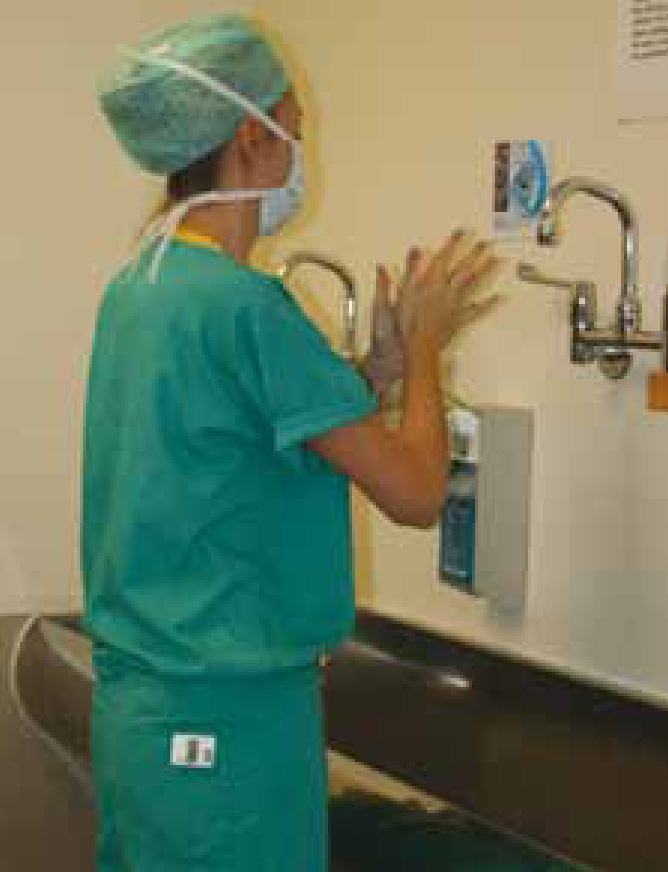
Surgical gloves
It is now widely accepted amongst human and veterinary surgeons that the wearing of gloves by scrubbed surgical personnel significantly reduces surgical site contamination and risk of SSI (Figure 3) (Verwilghen et al, 2011).
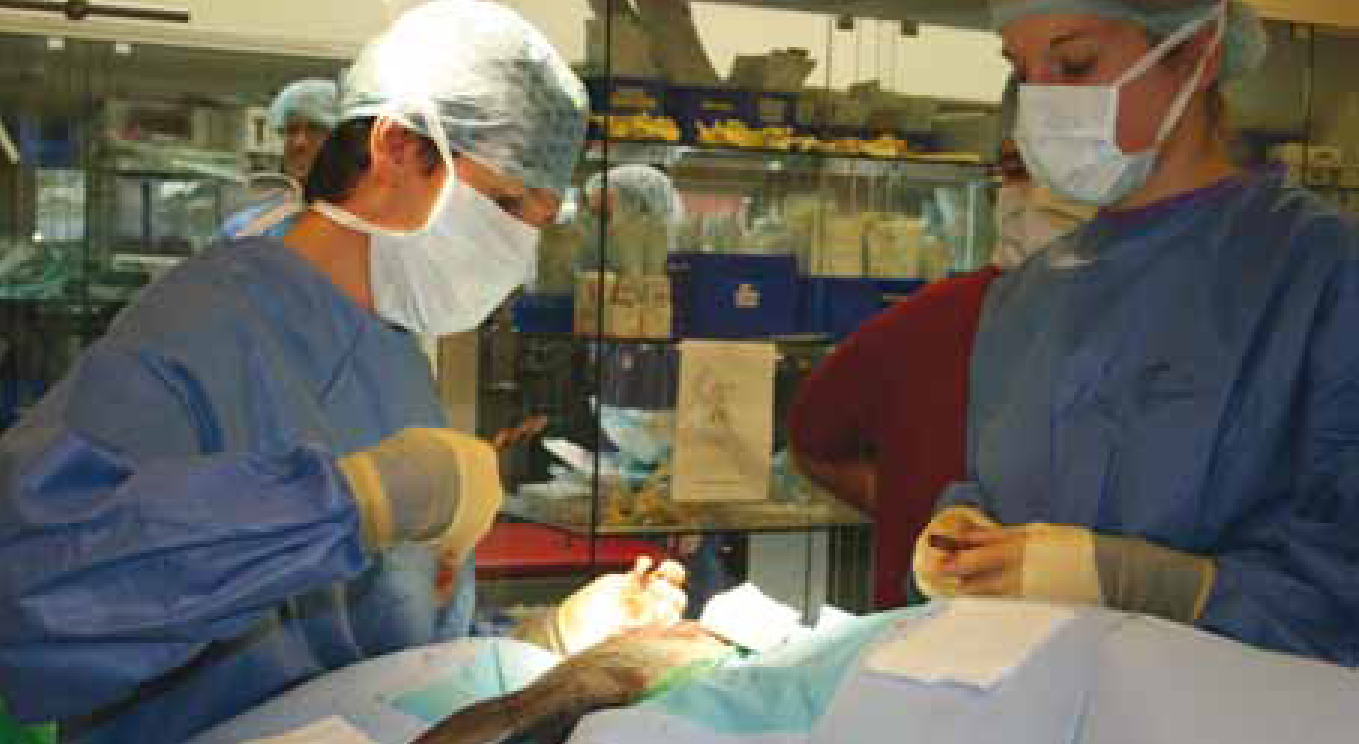
Surgical gloves become punctured in up to 35% of cases after 2 hours of surgery but it is of note that only 20% of glove punctures are noted by the surgeon (Nelson, 2011). There is insufficient evidence currently to establish a correlation between the incidence of SSI and glove puncture rate. Double gloving has become common especially where there is likelihood of increased glove puncture with sharp instruments or where contamination of implants could have catastrophic consequences, e.g. orthopaedic surgery. A systemic review (Tanner and Parkinson, 2009) of the wearing of more than one pair of surgical gloves concluded that there is no direct evidence that additional glove protection worn by the surgical team reduces SSI rates. However, unfortunately the review had insufficient power to state this categorically. The NICE guidelines state that, in the absence of available evidence, double gloving should be considered when there is a high risk of glove perforation and the consequences of contamination may be serious (NICE CG74, 2008). The practice of double gloving in human operating theatres, in part, stems from prevention of contamination of operating theatre personnel from blood-borne pathogens harboured by the patient. This is thankfully not so much of a major consideration in veterinary operating theatres in the UK at this time.
The best method of initially putting on sterile surgical gloves and the best method for intraoperative glove changing are surrounded by some controversy. Again there is little clinical evidence to support the assumed ‘gold standard’ of closed gloving. There is some research to show that open gloving is the least reliable of the three commonly used methods (open, closed and assisted) but most studies would suggest that to minimise the risk of gown contamination assisted gloving should be used especially for orthopaedic surgery (Newman et al, 2007, Hopper and Moss, 2010). Assisted gloving is not something that is routinely performed in veterinary surgery but further investigation could alter the clinical decision making in this area if gown contamination while gloving is shown to directly correlate with SSI rate in veterinary patients. For intraoperative glove changing again assisted gloving is recommended but there is little significant clinical evidence, however, one study has shown that open gloving may reduce the number of particles shed from the inside of the gown in situations where unassisted intraoperative glove changing is performed (Duxbury et al, 2003, Hopper and Moss, 2010).
Sterile surgical gowns
Surgical gowns are widely accepted to protect the patient by reducing the shedding of microorganisms from the skin and clothing of the operating team (Figure 4) (Manley and McNamara, 2010). Historically, gowns were made of cotton and this gave rise to bacterial strikethrough and these gowns were shown to be poor bacterial barriers as early as 1948 (Manley and McNamara, 2010; Eisen, 2011). Gowns may function to reduce the risk of SSI by two mechanisms: prevention of skin organisms from direct contact from the operating team's skin and clothing to the surgical site, field or instruments and prevention of bacteria from reaching the air which may later settle in these areas (Eisen, 2011).
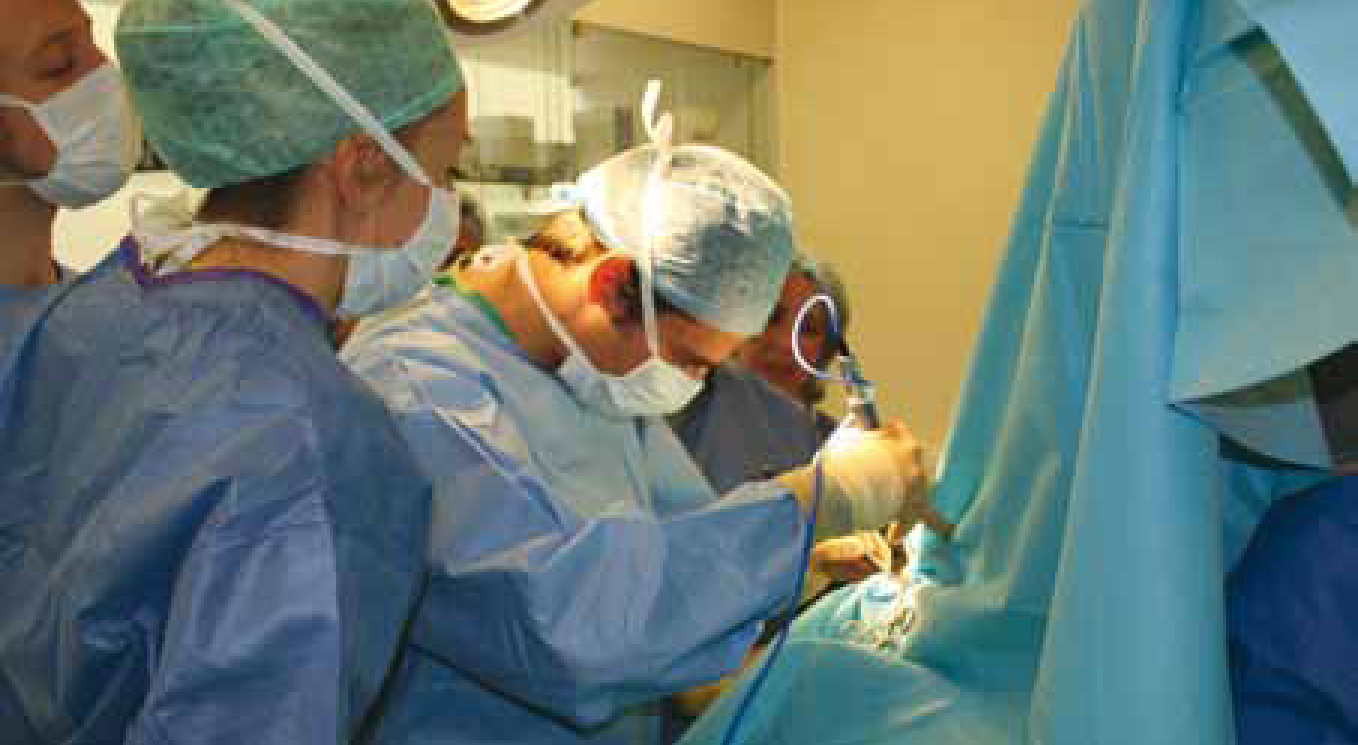
Surgical site preparation
It is widely accepted that hair removal should be done with clippers after induction and immediately prior to the surgical procedure with clipping prior to induction being associated with increased incidence of SSIs in dogs (Nelson, 2011). There are three groups of antiseptic skin preparation that have traditionally been used in veterinary patients: chlorhexidine-based preparations such as chlorhexidine gluconate; iodine-based preparations; and the alcohol-based group. While there are few studies that compare each antiseptic group, there is a body of evidence to suggest that the combination of 70% alcohol and a 4% chlorhexidine preparation is superior in reducing SSIs when compared with either agent used singularly (Manley and McNamara, 2010; Dumville et al, 2013). Unfortunately much of this evidence relies on small sample size and where there is little good quality research available it is impossible to categorically suggest one antiseptic solution over another, for patient skin preparation, without further research (Dumville et al, 2013). Additionally Association of peri-Operative Registered Nurses (AORN) 2006 stipulates that the applicator used for final preparation of the surgical site must be sterile (Dumville et al, 2013). Recently the traditional method of prepping surgical sites in concentric circles has been challenged in favour of a ‘back and forth motion’ with the theory being that the actual incision site with the concentric method receives inadequate disinfection (McDonald et al, 2001). The ‘back and forth motion’ of surgical site preparation seems to have been widely adopted despite the evidence being sparse and the studies that are available containing small sample sizes (Figure 5).
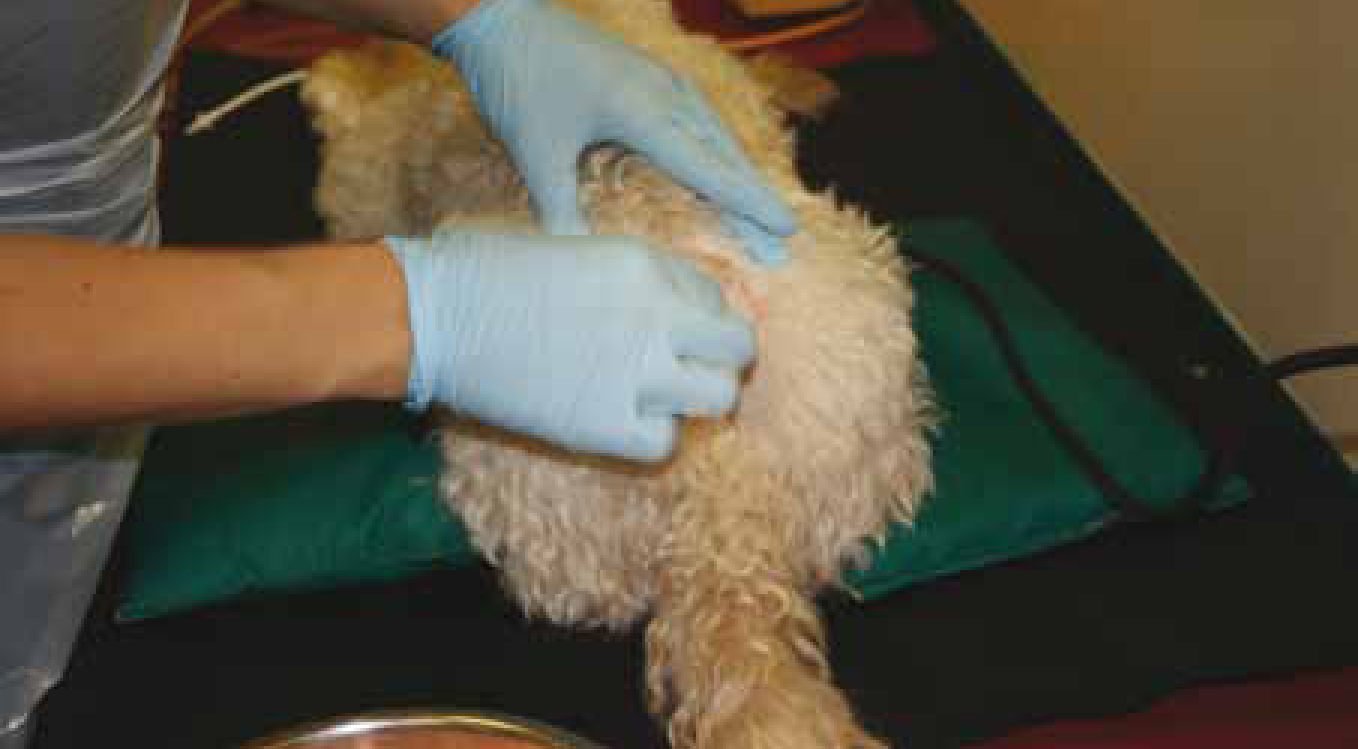
Antimicrobial coated sutures
In response to the morbidity and mortality associated with SSIs, triclosan-coated sutures have been recently developed as an adjunctive strategy for SSI risk reduction (Edmiston et al, 2013). Suture materials, as well as other implants, can play an important role in the formation of SSI as they provide a surface for the adherence of microorganisms and a subsequent biofilm formation that may make the microorganisms more adherent to the implant and more resistant to the host's immune system and antimicrobial treatment (Wang et al, 2013). Utilising suture material and other implants with specialised antimicrobial coatings such as triclosan may be one method to inhibit biofilm formation. Two systemic reviews have recently evaluated the effect of triclosan-coated suture materials on SSIs (Edmiston et al, 2013; Wang et al, 2013). While there are limitations to the findings of both reviews (including but not limited to: consistent diagnostic criteria for SSI, inconsistent reporting of patient factors, failure to address patient risk factors, and variations in study end points) when taken together the evidence suggests that antimicrobial sutures may reduce SSI risk compared with non-coated sutures (NICE SSI Evidence Update, 2013). This effect may be specific to particular types of surgery and further investigation is needed before NICE recommendations can be made.
Behaviour of the team and surgical skills
Behaviour of the operating team is something that may well have significant impact on SSI rates (Figure 6). Intraoperative noise, footfall in and out of the theatre, surgical difficulty, poor surgical technique, inadequate haemostasis, lack of discipline, lack of concentration and stressful environment are all potential risk factors for the development of SSIs (Kurmann et al, 2011). Many of these factors warrant further investigation, for example the number of people in the operating theatre seems to heavily influence bacterial contamination and many studies on SSIs do not account for this (Eisen, 2011).
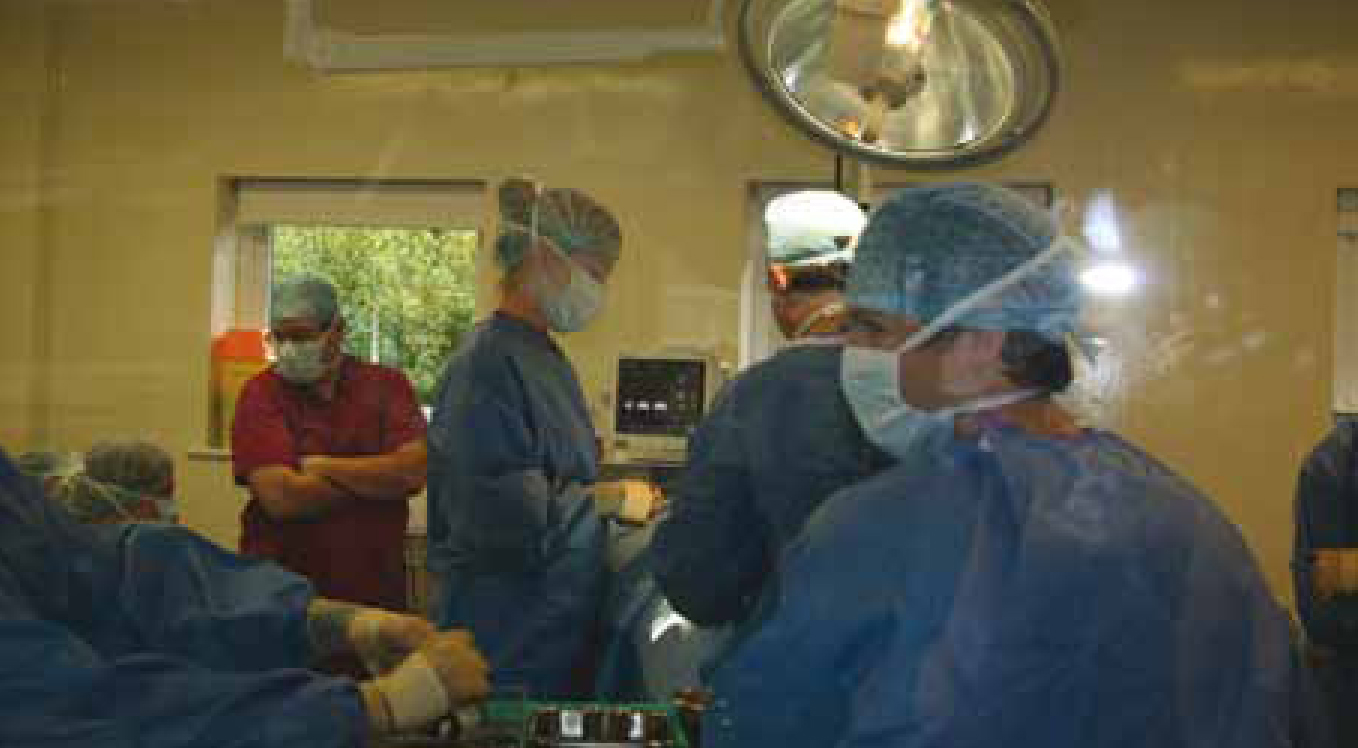
Conclusion
There is a clear evidence base for some of the infection control practices that are performed in veterinary operating theatres but many still have little or no evidence base. The biggest reduction in SSI risk is seen with appropriate hand disinfection procedures and is something that there has been a clear evidence base for since the work of Ignaz Semmelweis in the mid 1900s. It is widely accepted that the wearing of sterile gloves by all personnel involved in surgery reduces the risk of SSI (Verwilghen et al, 2011). However, there is insufficient evidence to support that double gloving reduces the risk of SSI. Despite this, current recommendations for human operating theatre staff include double gloving for orthopaedic surgery.
There is no clear evidence for other theatre wear including the wearing of freshly laundered theatre scrubs, surgical caps, masks and theatre shoes. Nonetheless this ‘uniform’ may encourage theatre discipline and therefore have the potential to reduce the risk of SSI. Subsequently these practices remain as recommendations in many human operating theatres (Amirfeyz et al, 2007; NICE Guidelines CG74, 2008; Manley and McNamara, 2010; Arrowsmith and Taylor, 2012; Lipp and Edwards, 2012).
Much more research is needed in the field of SSI reduction especially in regard to theatre wear. There are areas where research is progressing in the human field, for example the evaluation of antimicrobial coated sutures, that may provide clearer evidence on which to base clinical decision making in the future. Those protocols and practices in theatre infection control that there are a clear evidence base for should be routinely implemented for all surgeries. Where there is no clear evidence, it is the author's opinion, that practices should follow the guidelines set out for human operating theatre infection control (e.g. NICE guidelines) while striving to obtain veterinary specific research to evaluate and challenge current veterinary theatre practices.

